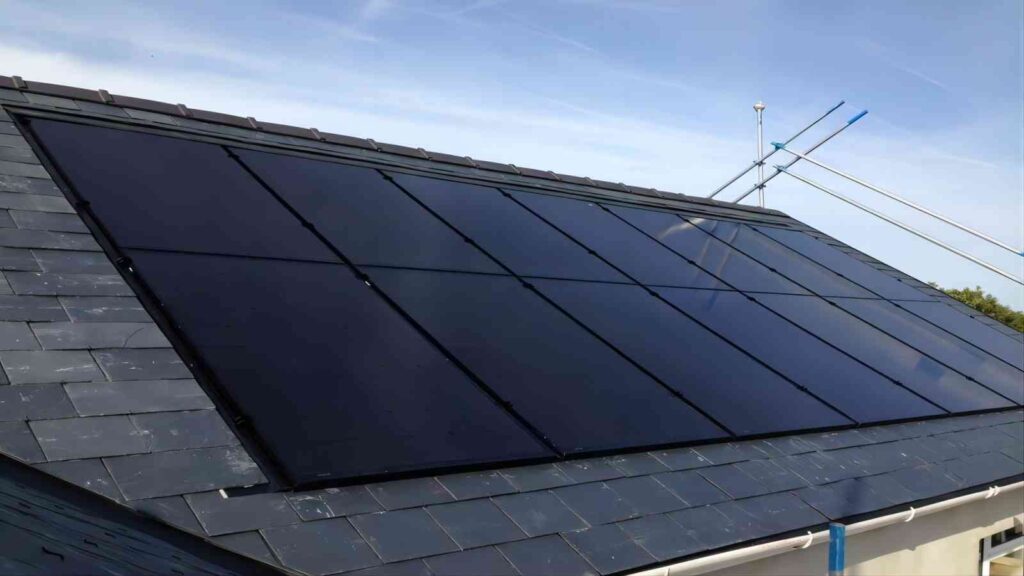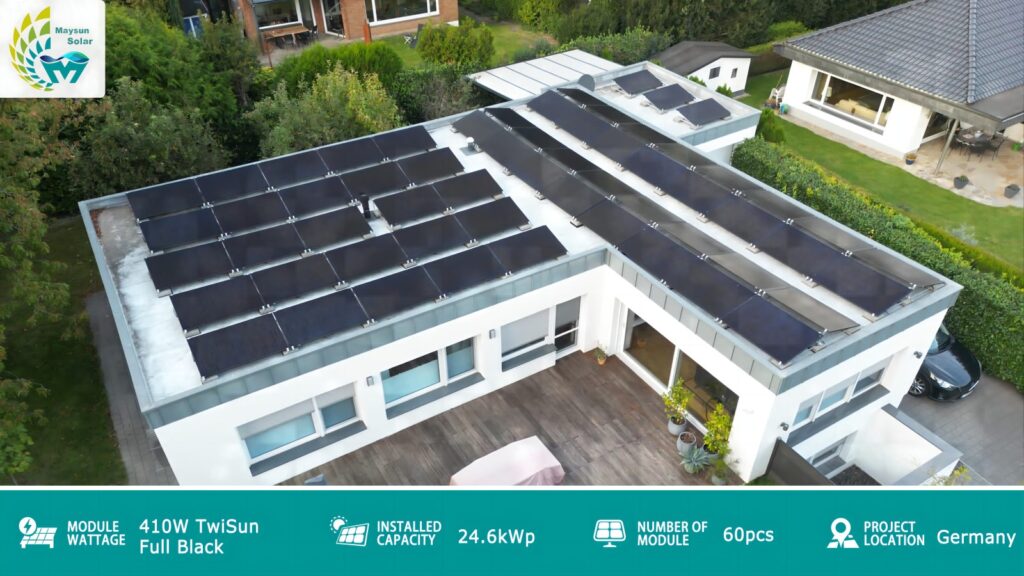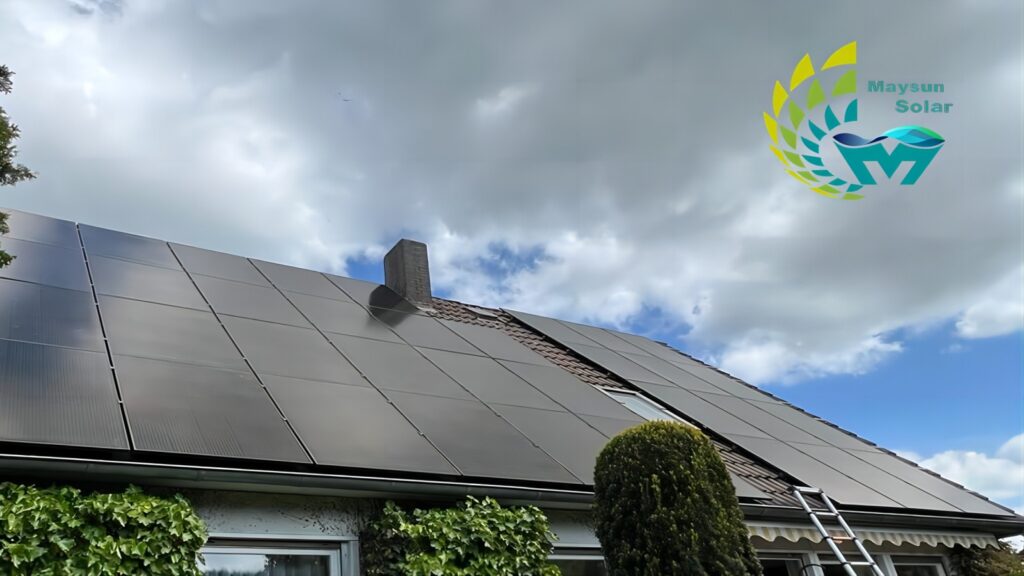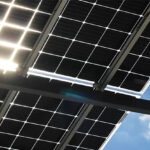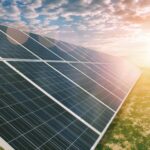Intro:
Numerous residential solar customers prioritize solar panels with the utmost cost-effectiveness and power rating. While these factors are paramount for those contemplating solar adoption, aesthetic considerations hold significance as well. This is where full black solar panels mainly come into play. When even a small section of the solar panel array may be visible to neighbors, homeowners typically opt for full black solar panels to achieve a refined and sleek appearance. This article will detail the manufacturing process of full black solar panels as well as their advantages and disadvantages.
Table of Contents
Why are Some Solar Panels Full Black?
The reason why full black solar panels have such a dark appearance is due to a variety of design and manufacturing techniques designed to minimise visible reflections and bright colours. Here are some of the reasons why:
Monocrystalline Cells: Polycrystalline silicon cells show mid-blue, monocrystalline silicon cells are dark blue, appearing almost black from a distance, so full black solar panels are usually selected monocrystalline cells, which makes the solar panels run more stably, and the overall appearance is more uniform and darker in colour.
Black Frame: To attain the desired full black aesthetic of solar panels, the frame is typically constructed using black anodized aluminium frame. This choice of black aluminum for the frame plays a significant role in creating the sleek and uniform all-black look of the solar panels.
Full Black Backsheet: The backsheet is the underside of the panel, and full black solar panels typically have a black backsheet. Backsheets for all-black solar panels are usually chosen from black materials such as black EVA (ethylene vinyl acetate copolymer) or other black backsheet materials. This helps to further reduce visible reflections.
Glass: The front glass of solar panels is generally maintained high light transmission as much as possible so that the cells can absorb more light and convert it into electricity. In the case of a glass-glass solar panel, it also has glass on the back. The back glass has two thicknesses, 2.0mm and 1.6mm, and is generally made of semi-tempered low-iron ultra-white photovoltaic glass with grid (black grid or white grid) or without grid according to the demand, which has incomparable advantages over the backsheet, and is gaining more and more recognition and share in the market. In glass-glass full black solar panels, the glass on the back (backglass) is usually transparent, which means that the sink bars and other connecting parts on the back may be visible in some cases. In order to maintain an overall full black appearance and to obscure these components, the manufacturer may add a black grid structure to the back glass. The purpose of this is to give the back of the solar panel a perfect black colour and to protect the busbar.
Encapsulation: Solar cells are encapsulated between the front glass and the back sheet with the help of ethylene-vinyl acetate (EVA) and a white Tedlar sheet for insulation. Full black solar panels usually use black Tedlar sheets or other alternative black encapsulation materials to maintain an aesthetically pleasing and consistent full black appearance.
Busbars and Contacts: In full black solar panels, the interconnecting wires or busbars between solar cells are also made from black materials or treated to appear black. This can be achieved by using black conductive adhesives or other black materials. Busbars and contacts on the front surface of the cells are designed to be black or dark in color to minimize visibility.
Silicone: Silicone is commonly used in the manufacturing of solar panels, especially glass-glass solar panels, to encapsulate and hold the solar cells in place, as well as to provide additional protection for the panels. In full black solar panel designs, the silicone is often dyed or selected to be black in order to maintain the overall black appearance. When attaching the solar panel’s frame to the glass, black silicone is employed to ensure the entire panel maintains a consistent and seamless color appearance. This use of black silicone not only enhances the panel’s overall aesthetics but also contributes to its cohesive, uniform look. The picture below shows what black silicone looks like on a full black solar panel.
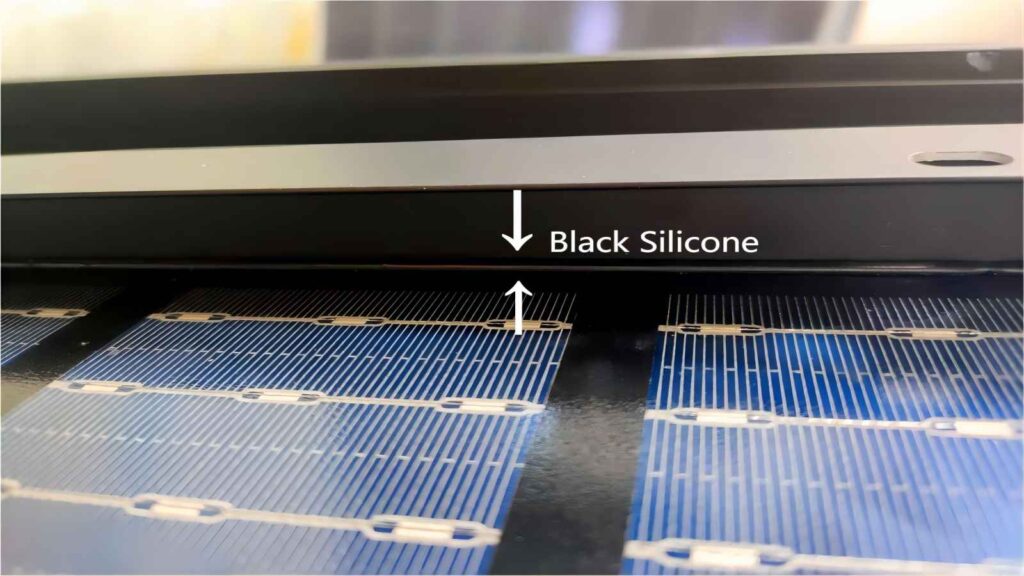
Taken together, full black solar panels achieve their extremely black appearance by choosing black materials, reducing reflections, using high-efficiency cells and optimising the design. This makes them very popular in applications where appearance is a concern, such as in the residential and architectural sectors. However, it is important to note that the electrical energy conversion efficiency of the panels may sometimes be slightly sacrificed in order to achieve the appearance.
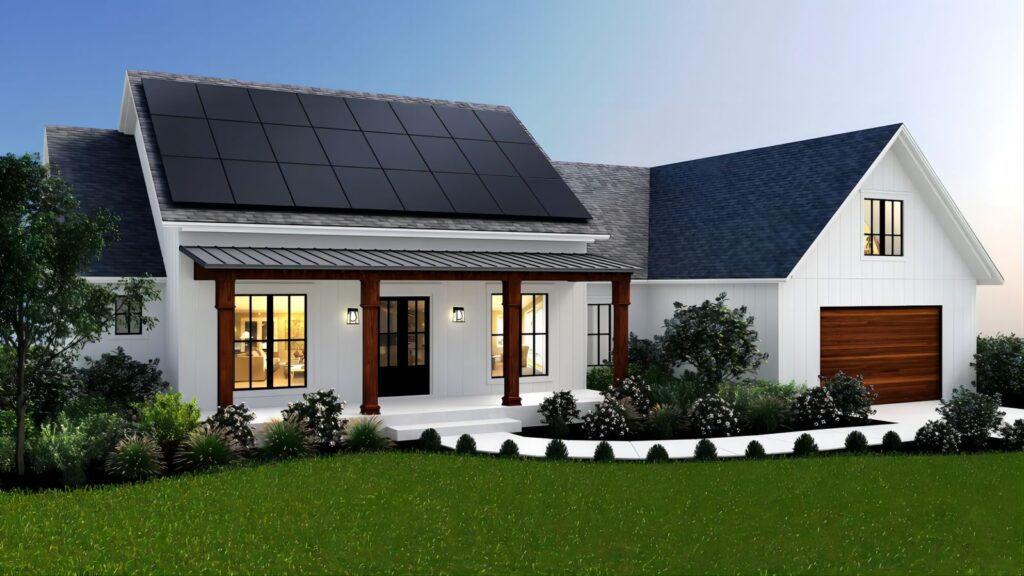
Advantages of Full Black Solar Panels
Aesthetically Pleasing: Full black solar panels are designed to have a sleek and uniform appearance. They blend well with various roofing materials and surroundings, making them a preferred choice for those who are conscious of the visual impact of solar panels on their properties. These solar panels also contribute to the overall aesthetics of a building. Their all-black design is considered more visually appealing, which can improve the curb appeal of a home or commercial property.
Reduced Glare: Mounting systems are generally made of aluminium, which is attractive and highly reflective. The use of black mounting systems (including black solar panels, black mounting blocks, black brackets, etc.) can reduce these reflections. The full black design minimizes glare and reflection. This is particularly advantageous in narrow buildings, especially residential installations as it prevents neighbours from being disturbed or even blinded by the silver glare.
High Snow-Melting Capacity: Because of the heat-absorbing properties of the black aluminium material, snowy conditions can accelerate snow melting. Full black solar panels have a stronger heat-absorbing capacity, which allows them to melt snow faster in cold areas, thus increasing the efficiency of power generation.
Disdvantages of Full Black Solar Panels
Full black solar panels offer several advantages, as mentioned earlier, but they also have some disadvantages when compared to conventional solar panels (typically monocrystalline) and polycrystalline solar panels. Here are the main disadvantages of full black solar panels:
Lower Efficiency: While monocrystalline cells are known for their efficiency, full black solar panels may be slightly less efficient than traditional monocrystalline solar panels due to the added layer of black coating, which makes the full black solar panel heat up faster and operate at a higher temperature, with less opportunity to absorb reflected light, and therefore a slight reduction in overall efficiency. Tec Institute conducted a test in which full black solar panels warmed up by an average of 5 degrees on a sunny day. This resulted in a performance loss of approximately 2.3 %. However, this performance loss was hardly noticeable in private use. Full black solar panels may boast a more aesthetically pleasing appearance but forfeit the advantages of reflection and light trapping, resulting in a decrease in photocurrent, typically up to 3% less than a module with a white backsheet. A three percent reduction in current translates to approximately a 0.5% decrease in absolute efficiency. The black backsheet of full black solar panels absorb the sun’s rays, causing the PV module to encapsulate a CTM (Cell-to-Module) value that is about 2.5 % lower than that of a silver module, which also reduces the performance of the solar cells.
Higher Cost: Full black solar panels in the production of colour is more difficult to control, the choice of materials is extremely demanding, their glass to take a uniform batch of raw materials, the same production process of the same photovoltaic glass, and the need to choose a dark-coloured cell. To achieve the same colour and no colour difference is a big challenge for full black solar panels. The yield rate of full black solar panels is relatively low. Therefore, full black solar panels are often more expensive than conventional and polycrystalline solar panels. The black aesthetic design and the use of monocrystalline cells typically come at a premium.
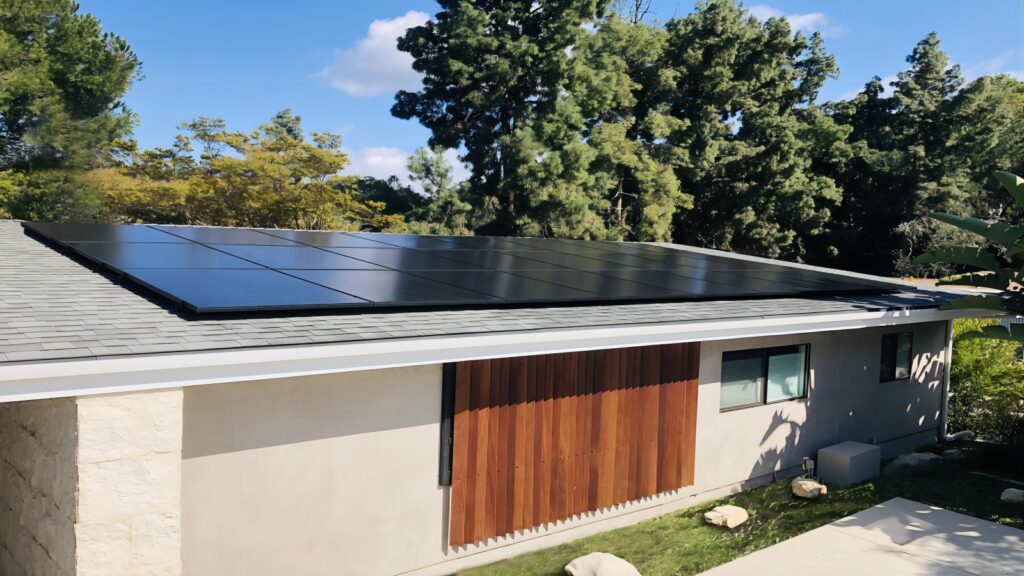
Are Full Black Solar Panels Worth Buying?
Full black solar panels are an increasingly popular choice these days. While they currently have some shortcomings. They are more expensive to manufacture, have lower production yields, and have a higher loss of power at higher temperatures than other solar panels. However, full black solar panels have an exciting future outlook. Technological advances will drive their efficiency and reliability to shine in a wider range of applications.
Ultimately, the decision should align with your specific needs and priorities. If you highly value the appearance of your solar system and are willing to invest a bit more, full black solar panels are the best choice. However, if cost-effectiveness and system performance are your primary concerns, you might lean toward regular solar panels.
Below is a picture of the TwiSun glass-glass full black solar panels installed by a German installer in Maysun, they are really aesthetically pleasing and blend in perfectly with the roof! Click on the image to see the product details!
Below is an image of a TwiSun 410W glass-glass full black solar panel installation from another German installer, the full black solar panels are perfectly integrated into the building’s roof, generating continuous power while remaining aesthetically pleasing. Click on the image or button for more information!
Maysun Solar has been specialising in producing high quality photovoltaic modules since 2008. Choose from our wide variety of full black, black frame, silver, and glass-glass solar panels that utilise half-cut, MBB, IBC, and Shingled technologies. These panels offer superior performance and stylish designs that seamlessly blend in with any building. Maysun Solar successfully established offices, warehouses, and long-term relationships with excellent installers in numerous countries! Please contact us for the latest module quotations or any PV-related inquiries. We are excited to assist you.

New Photovoltaic news you should know about (March 2024)
Table of Contents REC Unveils a 430 W Heterojunction Solar Module Boasting 22.2% Efficiency REC, a Singapore-based PV module manufacturer, introduces its residential solar modules featuring Alpha heterojunction cell technology. Production has commenced at REC’s Industry 4.0 fab in Singapore, with initial shipments

IBC Solar Modules vs. Bifacial Glass-Glass Solar Modules: Which Is More Suitable for Winter or Low-Light Conditions?
Table of Contents Introduction As the demand for renewable energy continues to surge, advancements in solar technology have broadened the spectrum of component choices available to us. Among these, IBC (Interdigitated Back Contact) full black solar modules have garnered special attention due to

Why Are Lightweight Bifacial Solar Panels the Best Choice for Balcony Solar Power Plants?
Table of Contents In the quest for efficient and eco-friendly home energy solutions, solar photovoltaic technology has emerged as a key player due to its sustainability and clean energy benefits. Particularly in the space-constrained urban settings, the effective conversion of every inch of

Questions You Might Ask About Balcony Solar Power Plants in 2024
Table of Contents What is a Balcony Solar Power Plant? Similar to a traditional photovoltaic panel, a Balcony Solar Power Plant is a device designed to generate electricity from solar energy. This green energy generator is specifically tailored for self-consumption, but it comes with

A Step-by-Step DTU Guide for Balcony Solar Power Plants
As renewable energy becomes increasingly integral in our daily lives, Maysun Solar’s Balcony Solar Power Station, with its advanced technology and user-friendly design, represents a transformative approach to home solar solutions. The integration of a Data Transfer Unit (DTU) enhances its smart functionality

What Are The Main Components of Solar Panels?
What are the main components of solar panel? Solar panels, the cornerstone of solar energy technology, are composed of several integral parts, each contributing to their ability to harness sunlight and convert it into electrical energy. In this article, we will explore the essential

